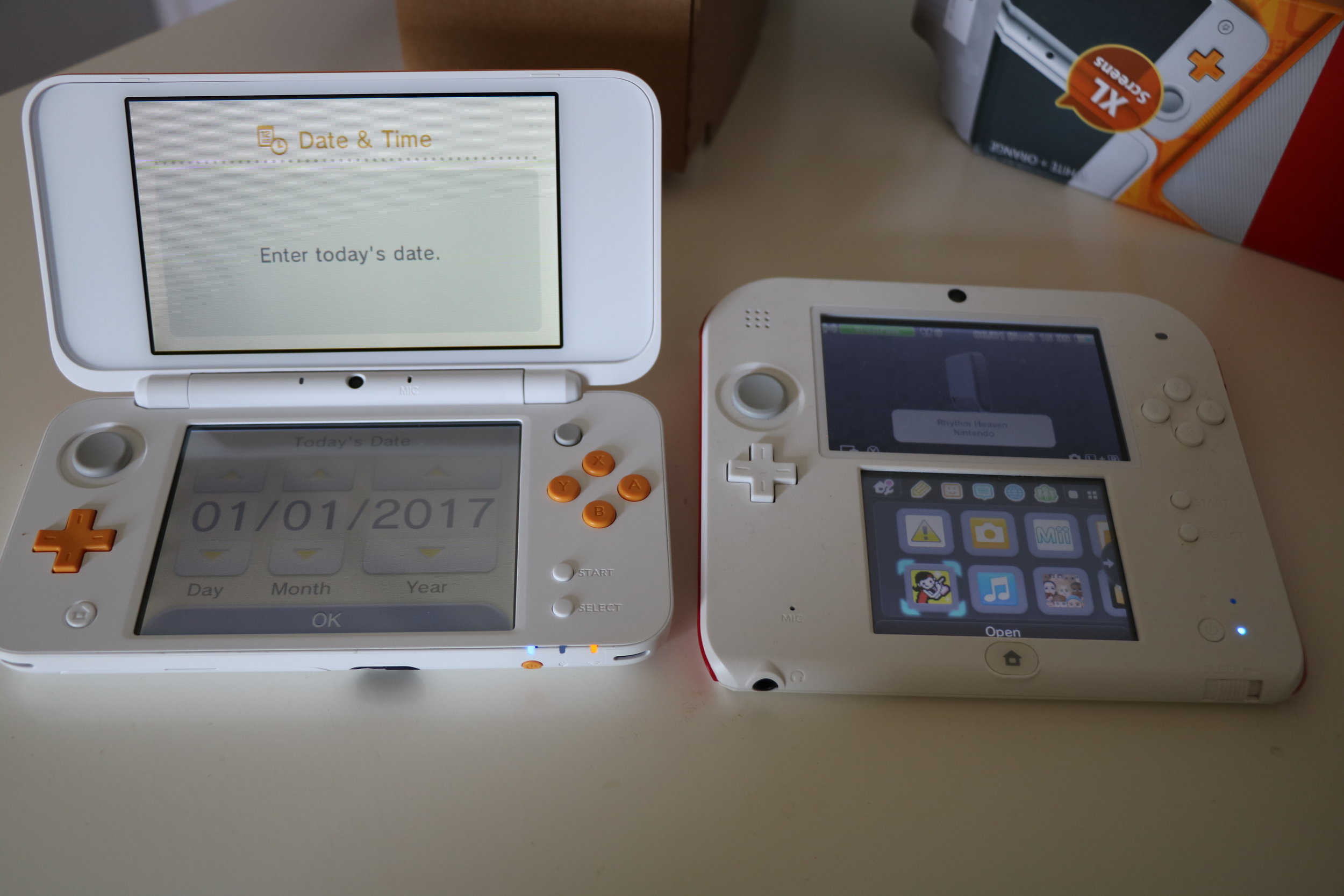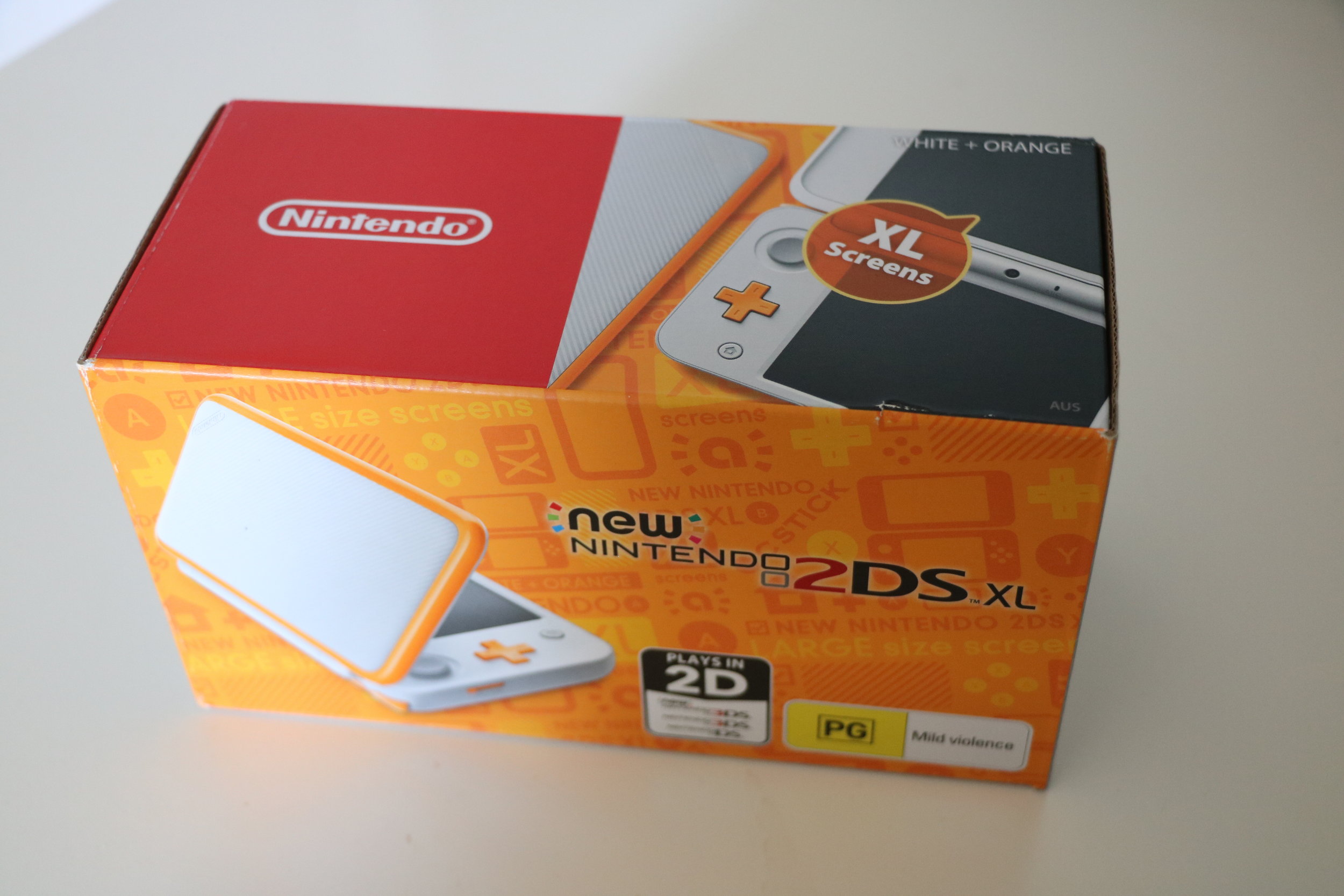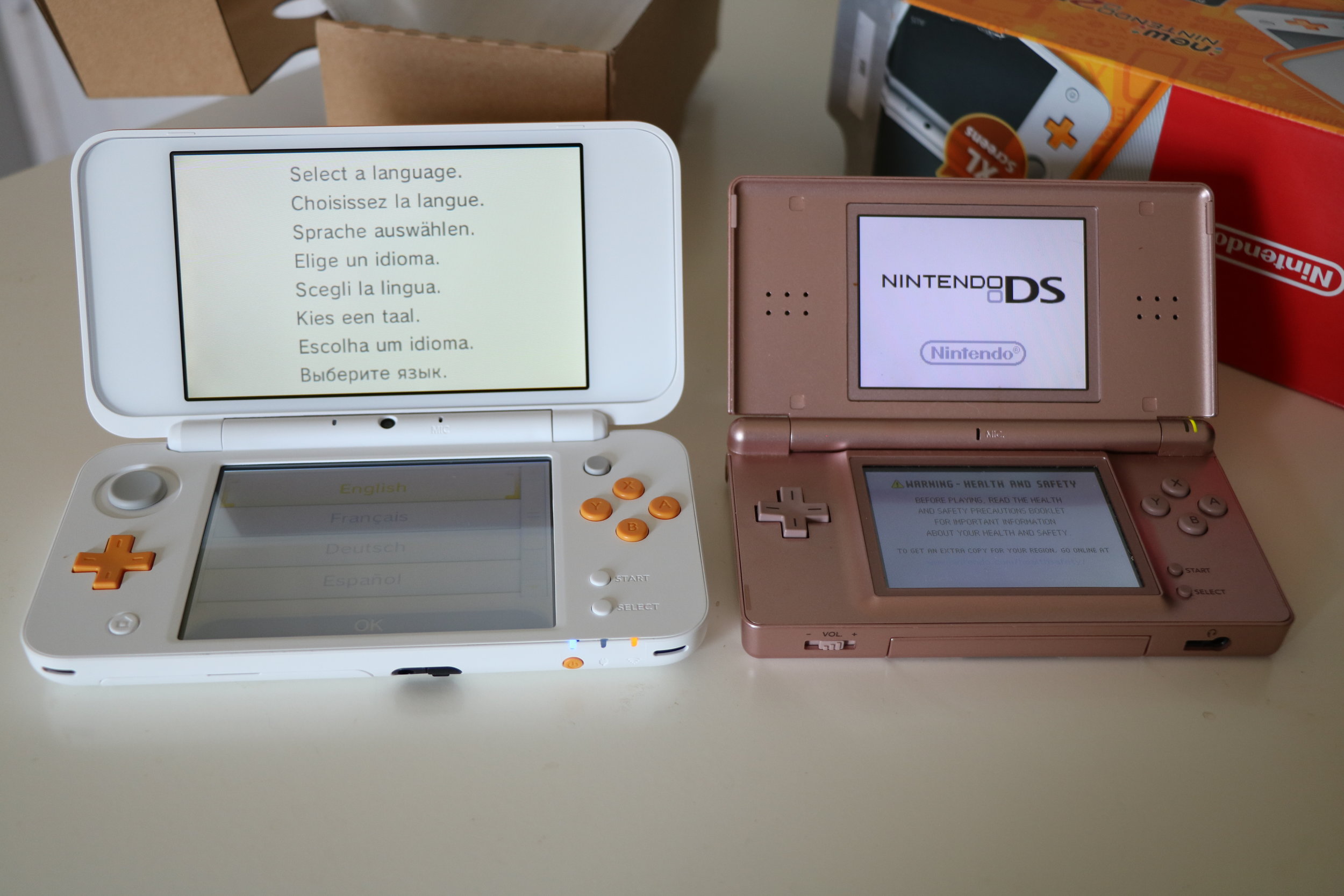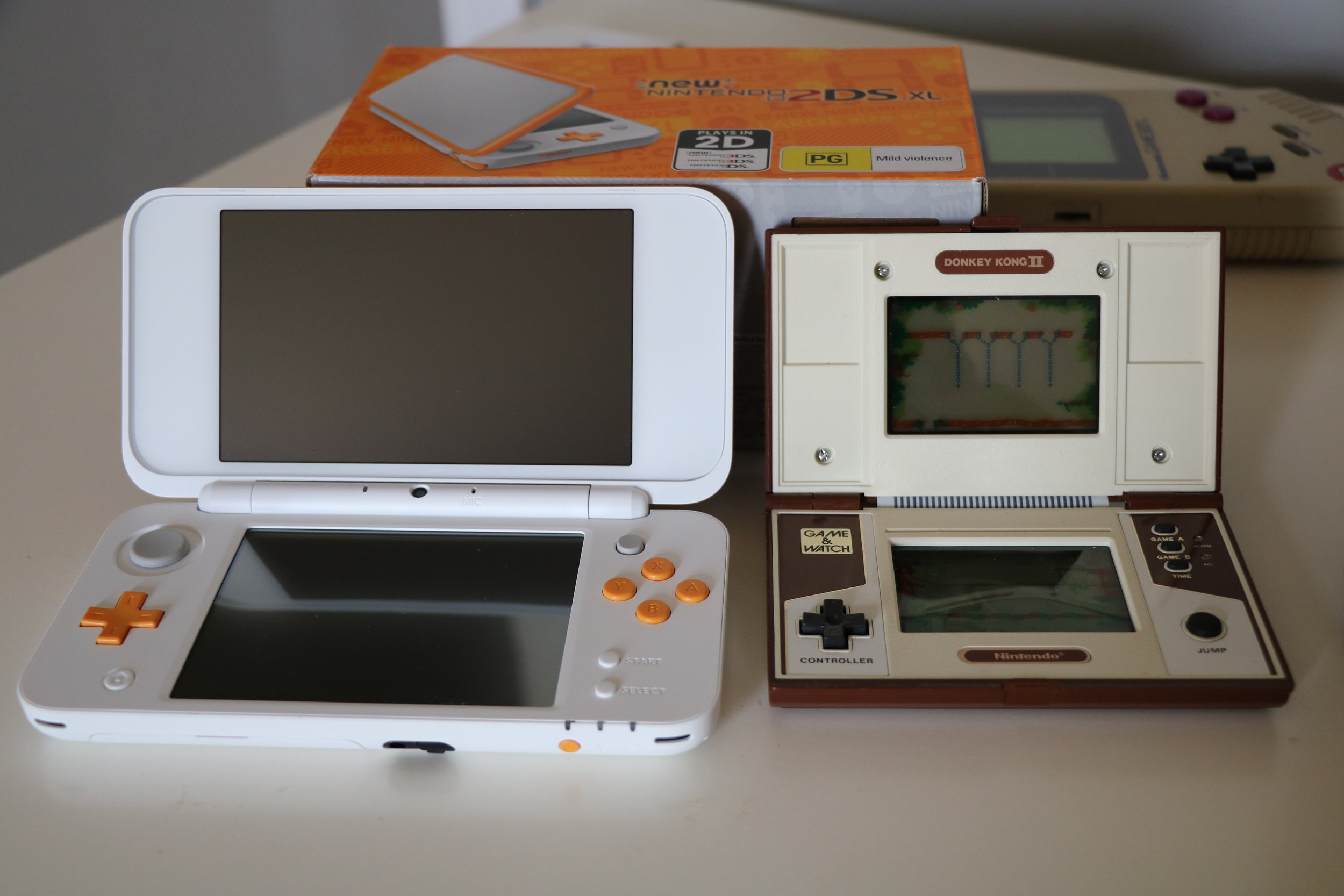I was recently shown the sixth entry in the 3DS hardware family, the “New Nintendo 2DS XL” which was good enough for me to go out and get one for myself. Released in mid-2017 for approximately $250 AUD, what was striking to me about the N2DSXL was the large screen, which was the single most disappointing component of the first 2DS (my review here).
The size difference between the N2DSXL and original 2DS is apparent even to me.
The comparative form factor is also more useful for those with fully-grown human hands, though the directional cross pad and placement of the face buttons are the same size (though the face buttons have more negative space between them.
One of the first surprises, when opening the box, was the presence of a power adapter. Usually Nintendo does not include these for late-cycle hardware revisions, nor indeed in their Classic console series. I once read that there was a punitively high tax in Japan on the inclusion of power adapters (which I was unable to confirm through a web search because the first 8 pages wanted to send me to sites that sell power adapters). Beyond the adapter there are a few augmented reality cards to play with, which I recall were the same included with the original hardware, and the usual manual.
The orange-sickle colours are not offensive to me, but if you prefer, themed hardware options (Pikachu and Animal Crossing) for about $50 AUD more are available.
The stylus is stored at the base of the unit this time (took me a little while to find it).
Once the unit is turned on the difference in light quality is apparent. Prior DS and 3DS formats before the “new” hardware always had a dim quality by comparison.
A DS cartridge was used for this review so I could compare it to the prior DS hardware. This shot above was taken with a camera pointed at the screen (no capture or editing software used).
The top screen in particular is so large (compared to other Nintendo handhelds) that after a few minutes of playing a game you are playing without distraction and completely subsumed by the experience.
Out of interest I compared the second iteration of the DS to what is likely the last version of the 3DS.
After playing with the N2DSXL for over an hour I did not find my hands were sore, as they often are with most longer gaming sessions with a handheld. I’ve since played it for over 6 hours with little battery loss, despite the larger brighter screens.
The N2DSXL is likely the last iteration of this hardware — Nintendo has not many more options to add, though they may go down the the miniaturisation route, as the did with the Game Boy Advance Mini. With Nintendo enjoying the the success of the portable Nintendo Switch, it must be difficult for them to see a way forward. Perhaps an affordable, ruggedised version of the Switch, more suitable for the rough treatment children generally apply to the items they love most is a happy medium.
Compared to one of the first “multi-screen” handhelds, it’s great to see Nintendo stick to a concept so doggedly.
If you have a substantial DS and or 3DS library picking up the N2DSXL is an easy decision, as it is the best hardware format available for those games.






